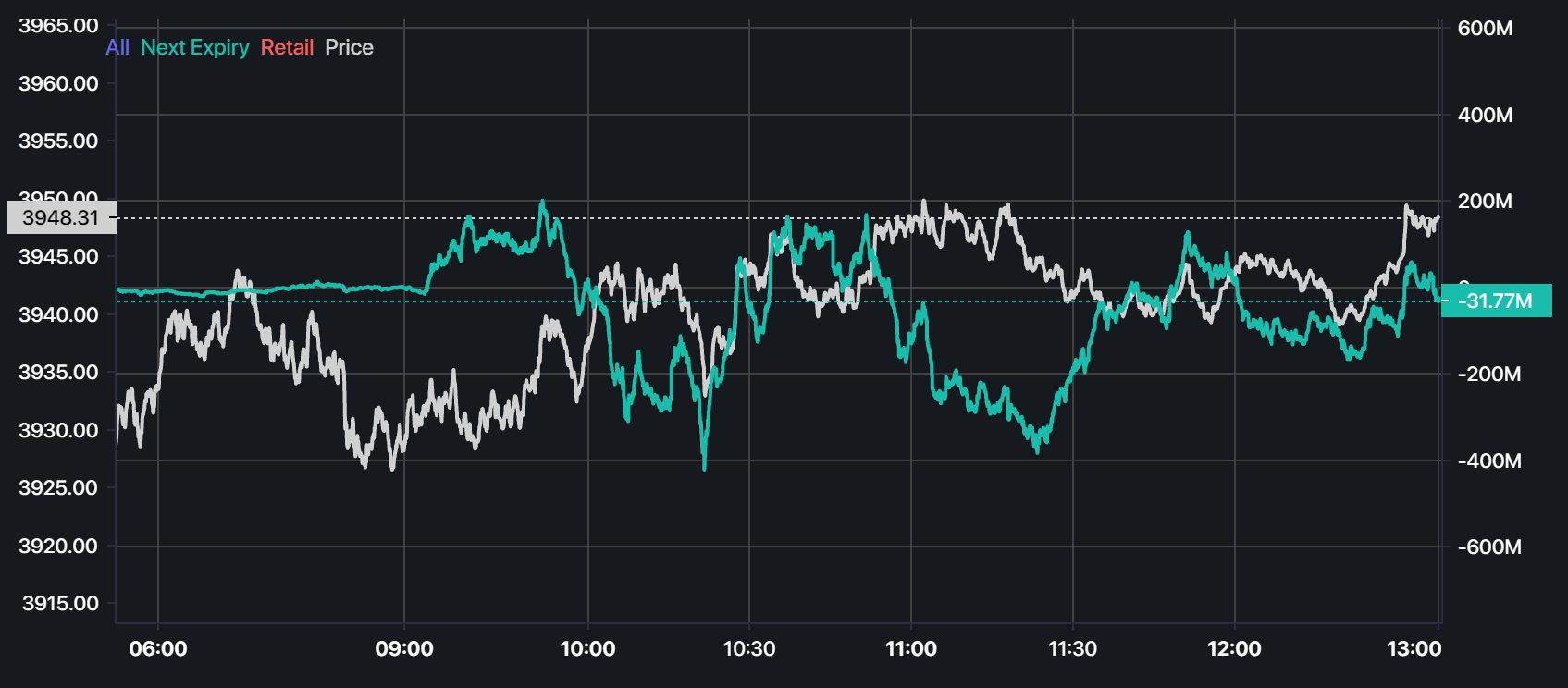Stocks fell slightly through noon today after opening modestly lower. The S&P and Nasdaq Composite both slipped while the Dow enjoyed a minor gain. Yields advanced again as the 10-year Treasury yield touched 4.09%, breaking out above a psychological level of resistance at 4.00%.
Earlier this week, technical analysts commented that a breakout past 4.00% could spark a rapid jump to 4.30% or higher. If the 10-year Treasury rises to 4.30%, rate-sensitive tech stocks would sell off steeply in response, dragging the general market down with them.
“The market’s reacting to stronger economic data, and data that is not confirming the correction in inflation,” explained Smith Capital Investors CIO Gibson Smith.
“It’s glaringly clear for equities that we could be an environment where growth is not coming in as high as we would like, and inflation is not coming down as fast as we would like, so the higher rates are starting to split the equity market.”
Initial jobless claims rolled in this morning, further amplifying the US’s ongoing economic anxiety. New unemployment filings totaled 190,000 last week (vs. 195,000 expected) while continuing claims printed at 1,655,000 (vs. 1,669,000 expected).
The pair of jobless claims “beats” battered futures as yields climbed. JP Morgan analysts warned clients last night that protracted selling could trigger a global selloff that plunges all markets, not just US stocks, lower.
“The S&P 500 Index slide from anticipated resistance in the 4100s threatens key chart levels surrounding 3900. A move through that support has the strong potential to accelerate bearish price pressures, in our view,” wrote JP Morgan index trader Jason Hunter.
“Other markets that have been sensitive to the China rebound story are testing key chart levels as well. A break there has the potential to feedback into western markets as global macro sentiment may sour.”
JP Morgan managing director Ron Adler commented on this as well.
“This tape is nearing max frustration,” Adler told clients, noting that 10-year yields are a likely catalyst for a market-wide rout.
“The red headline guy has almost hit the ‘send’ button on the ’10-year yields hit 4% for the first time since November 2022′ headline 17 times today. Growth investors anxiously await that catalyst to sell the stocks they sold in November again (you know, the same ones they subsequently bought in January). That trigger finger is very, very itchy.”
Thus far, stocks have been able to survive the 10-year Treasury yield breakout past 4.00%. It may only be a matter of time, however, until the soaring yields crush stocks.
Rampant buying from ultra-short-term options traders has rescued the S&P from grim selloffs several times over the last two weeks.

Today was no different. In the chart above (provided by SpotGamma) the S&P 500’s price (white line) is plotted alongside zero days to expiration (0DTE) options trading activity. 0DTE options are simply options contracts on the S&P 500 and SPY ETF that expire this afternoon.
Shortly before the market opened, 0DTE trading activity exploded net bullish by roughly 200 million contracts as traders bought calls and sold puts while S&P futures were still down relative to yesterday’s close. A divergence like this tends to have a delayed response. Today, it lifted the S&P to an intraday high before the index spent the rest of the morning chopping sideways.
We’ve mentioned 0DTE options before and how their massive popularity now dictates sentiment more than ever. And while 0DTE dip buying has prevented lower opens from spiraling into intraday collapses, 0DTE options could also generate massive runs lower on bearish breakouts past levels of support.
JP Morgan traders seem to think that 3,900 is the last line of short-term defense for the S&P. Right now, the S&P’s trading at around 3,940. Will support hold if it’s touched? Maybe.
But if 0DTE bears start to smell blood in the water, they’ll likely pounce, potentially sinking the S&P below 3,900 while kicking off a global equity meltdown in the process.








